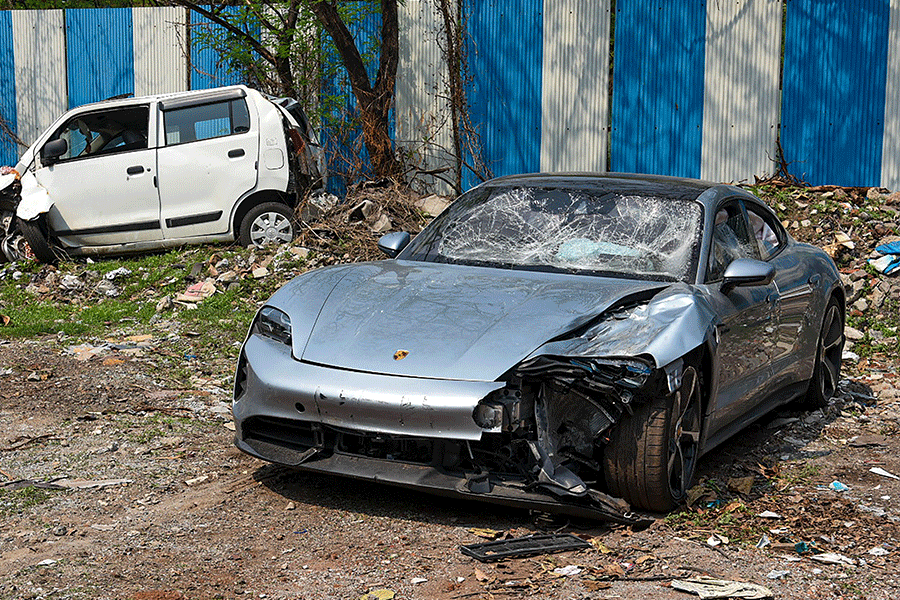Gujarat recently experienced the most powerful cyclonic storm after 1998. Cyclone Tauktae caused widespread destruction of private and public assets, uprooting electricity poles and trees, damaging agricultural crops and houses, in addition to causing human fatalities. RMSI, a consultancy firm working in the catastrophe risk management area, has estimated the damage to be worth around Rs 7,500 crore in Gujarat and Daman & Diu. The figure is four times higher than the cost incurred during the 1998 cyclone. Tauktae inflicted similar damages in Kerala, Karnataka, Goa, and Maharashtra. According to the preliminary reports, the highest fatalities occurred in Gujarat (53) followed by Maharashtra (16), Karnataka (8) and Goa (3).
India’s geo-climatic conditions, coastal erosion, and socio-economic vulnerabilities are responsible for the rise in the frequency of cyclones and the damages they are causing across India’s coastal states. Around 75.83 per cent of the country’s total coastline is exposed to cyclones and tsunamis, and 14.2 per cent of the population in 66 coastal districts in 13 coastal states/Union territories is vulnerable to the fury of cyclones. An earlier report published by the World Bank and the United Nations estimated that around 200 million residents would be exposed to storms and earthquakes by 2050 in India.
According to a report by the Odisha government titled “Memorandum: Extremely Severe Cyclonic Storm ‘Fani’”, 2019, around 7 per cent of the world’s cyclones originate in the Bay of Bengal and the Arabian Sea, with their impact being relatively higher when they make landfall in the area of North Bay of Bengal. The report also confirms that India experienced a total of 359 cyclones over the period, 1891-2000. Around 98 cyclones made landfall in Odisha’s coastal zone which is the highest landfall experienced by states. Odisha was followed by Andhra Pradesh (79), West Bengal (69), Tamil Nadu (62), Gujarat (28), Maharashtra and Goa (18), Kerala (3) and Karnataka (2).
In 2019, India was ranked the seventh most vulnerable country globally in the overall Global Climate Risk Index. Worryingly, India also ranked first in terms of deaths and economic losses due to extreme weather-related events. India lost 2,267 human lives and incurred damages worth US $68,812 million in PPP terms in 2019. Among all the natural disasters occurring in India, cyclones are the second-most frequent and lethal after floods. According to the ministry of earth science, out of every five cyclones developing over the Bay of Bengal and the Arabian Sea, three or four make landfall on the Indian coast, causing enormous destruction to life and property. Between 1999 and 2020, India experienced 37 cyclones, which saw 12,510 humans losing their lives and 73 million being adversely affected. The damages to public infrastructure and private property stood at around US $3,111 million (EM-DAT). The frequency of cyclones increases the financial pressure on the government on account of expenditures incurred by way of rehabilitation and mitigation. During this period, India lost around 1.8 per cent of its gross domestic product and 12 per cent of Central government revenue to cyclones.
Over the years, human fatality has declined significantly due to the upgradation of early warning systems and the construction of flood and cyclone shelters in low-lying areas. Evacuation measures along with effective disaster mitigation have helped minimize loss of lives. Additionally, there is better coordination between the Centre and the states; social media also plays a critical role in spreading awareness about the impact of cyclones.
However, government preparedness and improved warning systems are still not adequate to prevent the loss of property and lives. The government has adopted a long-term disaster management policy, which is aimed at improving warning systems, constructing cyclone shelters, linking roads connected to cyclone shelters, building or renovating saline embankments, and providing pucca houses to eligible beneficiaries, especially those living in vulnerable coastal areas. Enhanced coverage of shelter-belt plantation and the regeneration of mangroves have, to some extent, diminished the impact of cyclones.
The government must adopt a zero-fatality approach to minimize damages from cyclones by modernizing disaster management mechanisms and making greater investments in cyclone risk mitigation infrastructure. Finally, a larger number of coastal districts should be brought under the National Cyclone Risk Mitigation Project, a flagship programme of the Government of India on cyclone risk mitigation.










